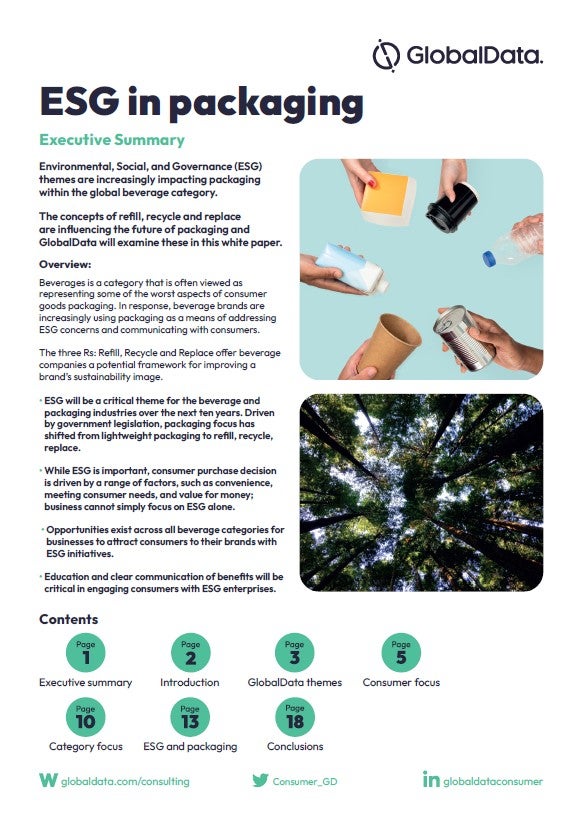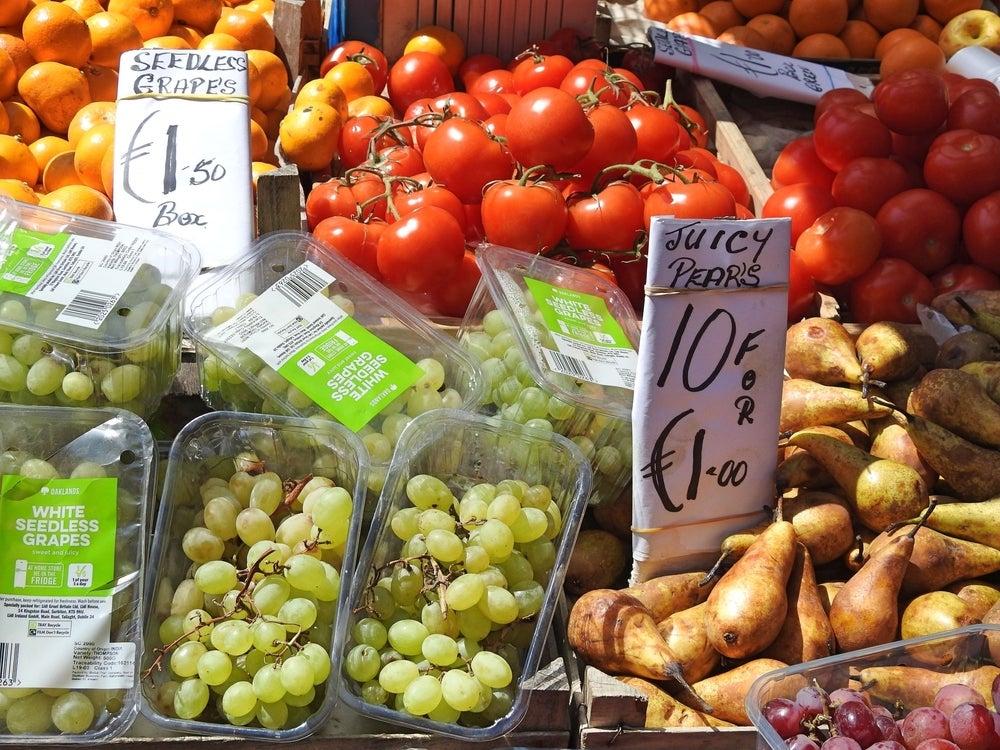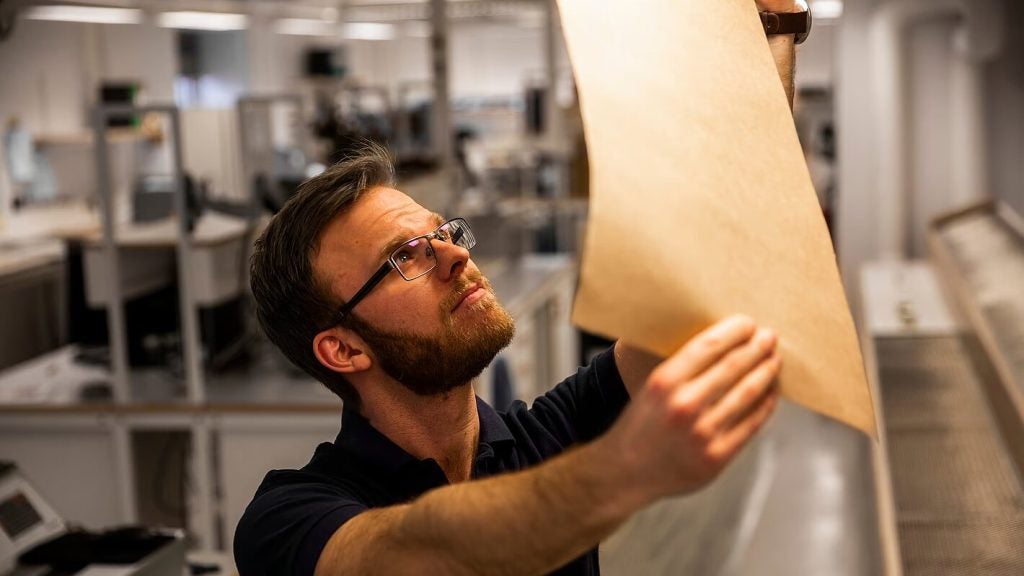
A recent conference hosted by Packaging Gateway’s parent company, GlobalData, titled ‘Key themes impacting the global consumer market’ revealed there are five key themes set to impact the global consumer packaging industry.
The conference listed five themes affecting the future packaging industry, including:
How well do you really know your competitors?
Access the most comprehensive Company Profiles on the market, powered by GlobalData. Save hours of research. Gain competitive edge.

Thank you!
Your download email will arrive shortly
Not ready to buy yet? Download a free sample
We are confident about the unique quality of our Company Profiles. However, we want you to make the most beneficial decision for your business, so we offer a free sample that you can download by submitting the below form
By GlobalDataESG (environmental, social, governance)
Digitalisation
Robotics
Cybersecurity
Easy & affordable.
The key three themes for packaging professionals to watch
Of the five key themes, GlobalData analysts explain ESG, digitalisation and robotics are the most important ones for businesses right now and in the near future.
The analysts state that for businesses across all sectors, 2022 was marked with disruptions across the globe and describe it as a ‘perfect storm’. The conflicts in Ukraine affected the European market, almost 300,000 tonnes of rice was lost to floods in Pakistan, whilst heatwaves in Canada and China affected harvests and created water shortages in some regions.
The worldwide disruptions created challenges for global supply chains and the pressure was also felt by the consumer. Meanwhile, high inflation rates have seen changes in consumer behaviour, with some reverting to pandemic-like behaviours, such as cocooning, driving less, buying in bulk and stockpiling.
1. ESG
ESG remains a high-ranking theme across all sectors as global emission target dates draw closer and consumers place environmental, social and ethical matters in high regard. GlobalData statistics show 77% of consumers globally find sustainable/environmentally friendly features to be an essential or a ‘nice thing to have’. The data also reveals 56% of global consumers strongly/somewhat agree that they want brands to actively address global social issues.
A GlobalData B2B sentiment poll highlights increased regulation will impact businesses. The poll, which was compiled in Q2 of 2022 showed 20% of businesses ranked ESG as the biggest theme, behind the pandemic, in terms of what would have the biggest impact on their businesses over the next 12 months.
GlobalData analysts believe packaging companies should communicate and adhere to a clear sustainability plan to manage risk effectively. They also state that aiming for a closed-loop supply chain is ideal as recyclability in packaging is most desired by consumers and reusability is a growing focus among regulators.
“A packaging company’s ESG credentials will increasingly define its relationship with consumers, investors, and regulators because climate change is only going to get worse,” points out GlobalData associate analyst Rory Gopsill.
“As its effects grow increasingly disastrous, packaging companies are going to be under increasing pressure from consumers, regulators, and investors to reduce their environmental footprint. Those that can improve their sustainability credentials the most will face the least pressure and ultimately, remain more profitable,” he adds.
2. Digitalisation
Digital technologies are increasingly allowing consumer goods companies to develop greater levels of insight throughout their business across the whole value chain. The GlobalData conference reveals AI (artificial intelligence), 5G, IoT (Internet of things) and AR/VR (augmented reality/virtual reality) are among the most influential tech available in the near future.
The analysts presenting during the conference also suggest supply chains will be fully digitalised and automated by 2035 and that more local operations will be scaled up through organic and non-organic printing, thus reducing the need for long-distance logistics. These practices can be seen as businesses turn to options such as D2C (direct-to-consumer) for access to consumer data, social media to increase visibility and AI to optimise production efficiencies.
The rate of digitalisation-related hiring within the packaging sector is accelerating, with businesses such as American corrugated packaging company WestRock and packaging solutions company Tetra Laval advertising for jobs in the sector. The analysts also highlight the number of company filings that indicate digitalising operations is a priority for the packaging industry. In fact, five of the ten largest packaging companies mentioned digitalisation in their fillings over 200 times between January 2018 and August 2022.
Gopsill says: “Digitalisation underpins automation, unlocking the potential of eCommerce, and improves business operations based on data analysis. It is essential in the short term, with the looming recession and it makes improving efficiencies all the more important. In the long term digitised packaging businesses will become more financially and operationally attractive to customers as they will be able to produce material more cheaply and with eCommerce capabilities.”
3. Robotics
Robotics is the third key trend for packaging professionals to take note of now and in the near future. It is the branch of technology that deals with the design, construction and application of robots. Robotics has been a major tool used to assist humans by replacing manual labour to help improve cost efficiencies and increase accuracy.
Industrial robots and logistics robots are believed to have the greatest role to play in the packaging sector and this is why robotics is becoming an increasingly important theme. Using technologies such as cloud computing and AI enables robots to collaborate and access huge amounts of uninterrupted data, which gives businesses many advantages. For example, the packaging industry has seen an increase in its usage to improve supply chain management and automation.
Gopsill explains: “Robotics will play a crucial role in factory and warehouse automation in the next 10 years. It saves costs, which is fantastic in any economic climate, especially in the one we’re facing right now.”
The importance of robotics has correlated with the accelerating rise in robotics-related hiring within the packaging sector. GlobalData analysts note every quarter of 2022 has seen more robotics-related hiring than any of its counterparts as packaging companies hire more personnel to install and maintain robots.
The analysts point out that packaging lines, warehousing and logistics are the main areas that packaging companies should concentrate on. Plus, packaging companies should invest in robotics products such as caged industrial robots, industrial co-bots and logistic robots.
Although digitalisation and robotics seem closely aligned, Gopsill tells Packaging Gateway digitalisation will have a greater impact on packaging than robotics because it entails a variety of technologies (AI, cloud computing, VR and AR).
He states: “These technologies underpin industrial automation and eCommerce. Robotics is one technology. It is often included in packaging companies’ digitalisation initiatives because it can automate tasks in production and warehousing.”
The analysts at the conference also list cybersecurity and ‘easy and affordable as being two high-ranking themes impacting the global consumer market. ‘
Worldwide disruptions such as the war in Ukraine brought about increased worries over cybersecurity and that put a huge strain on resources leading to inflated market prices, with pressures being felt by both consumers and businesses alike. In response to inflationary prices, companies are now prioritising efficiency and affordability by hiring personnel that can improve the cost-efficiency of their businesses.








